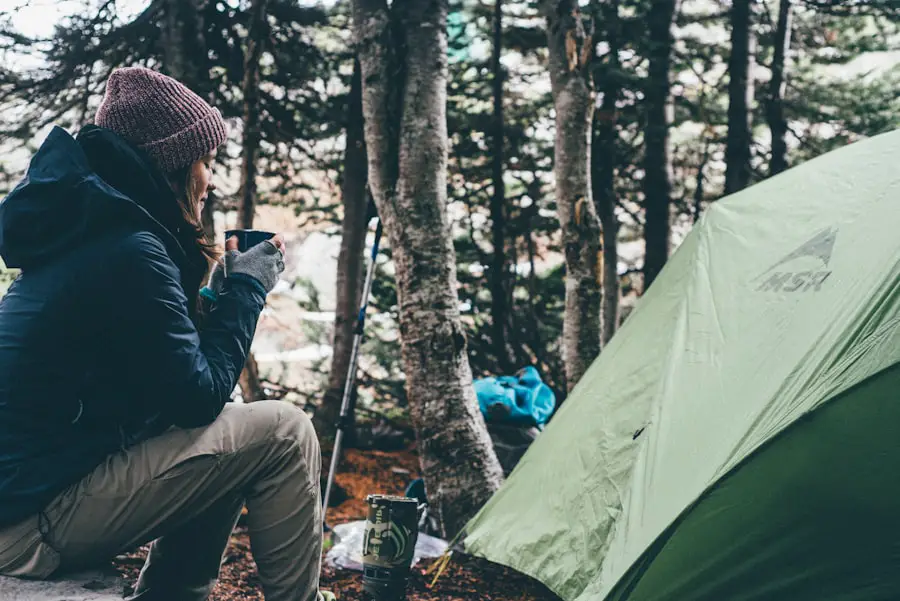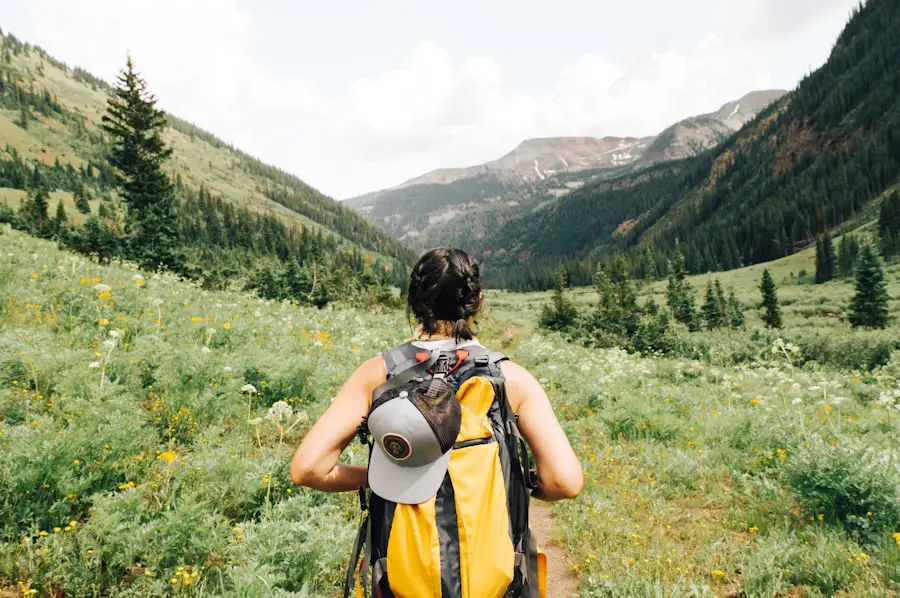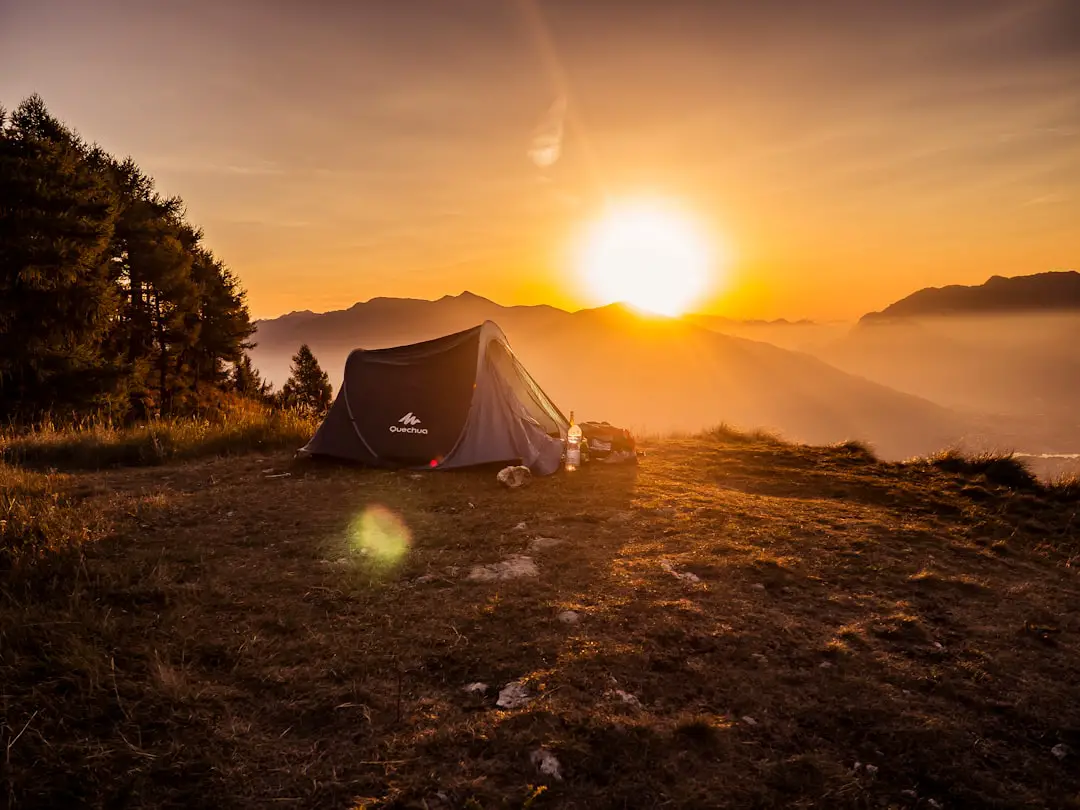Backpacking and hiking are two of the most popular outdoor activities that allow individuals to immerse themselves in nature while enjoying physical exercise. Both activities offer unique experiences, catering to a wide range of preferences and skill levels. Hiking typically involves walking on established trails for shorter durations, often returning to the starting point, while backpacking encompasses longer treks that require carrying all necessary gear for extended periods, often leading to remote locations.
The allure of these activities lies not only in the physical challenge they present but also in the opportunity to connect with the natural world, explore diverse landscapes, and experience the tranquility that comes from being outdoors. The history of hiking and backpacking can be traced back to ancient civilizations, where people traversed landscapes for trade, exploration, and survival. In modern times, these activities have evolved into popular recreational pursuits, with millions of enthusiasts taking to trails and backcountry routes each year.
The rise of outdoor culture has been fueled by a growing awareness of the benefits of spending time in nature, as well as advancements in gear and technology that make these activities more accessible. Whether one is navigating a well-trodden path in a national park or embarking on a multi-day trek through rugged wilderness, the spirit of adventure and discovery remains at the heart of both hiking and backpacking.
Key Takeaways
- Backpacking and hiking are great ways to explore the outdoors and connect with nature.
- Proper gear and equipment are essential for a successful backpacking and hiking trip.
- The duration and distance of backpacking and hiking trips can vary greatly, from short day hikes to multi-day treks.
- Backpacking and hiking require different skill levels and have varying physical demands.
- It’s important to consider the environmental impact of backpacking and hiking and take steps to minimize it.
- Safety should always be a top priority when backpacking and hiking, including being prepared for emergencies.
- The benefits of backpacking and hiking include physical exercise, mental relaxation, and a sense of accomplishment.
- When choosing between backpacking and hiking, consider your preferences, fitness level, and available time.
Gear and Equipment for Backpacking and Hiking
Day Hiking Essentials
For day hikes, essential items include sturdy footwear, weather-appropriate clothing, a daypack, water bottles or hydration systems, snacks, and navigation tools such as maps or GPS devices. Footwear is crucial, as hiking boots or shoes should provide adequate support and traction to navigate uneven terrain.
Backpacking Necessities
Backpacking requires a more comprehensive array of equipment due to the extended duration and self-sufficiency required. A well-fitted backpack is essential for carrying all necessary gear, which may include a tent or shelter, sleeping bag, cooking equipment, food supplies, and additional clothing.
Lightweight and Functional Gear
Lightweight materials have revolutionized backpacking gear, allowing adventurers to minimize weight without sacrificing functionality. For instance, ultralight tents can weigh as little as two pounds while still providing adequate protection from the elements. Additionally, portable cooking systems such as compact stoves and lightweight cookware enable backpackers to prepare meals in remote locations.
The choice of gear can significantly impact the overall experience; thus, investing in high-quality equipment tailored to specific needs is paramount.
Duration and Distance of Backpacking and Hiking

The duration and distance of hiking and backpacking trips can vary widely based on individual goals, fitness levels, and environmental conditions. Day hikes typically range from a few miles to over ten miles, with most trails designed to be completed within a single day. These hikes can be leisurely strolls through scenic parks or challenging ascents up steep mountains.
The flexibility of day hikes allows participants to choose routes that match their physical capabilities while still providing opportunities for exploration and enjoyment of nature. Backpacking trips, on the other hand, often span multiple days and cover greater distances. A typical backpacking itinerary might involve hiking anywhere from five to twenty miles per day, depending on factors such as terrain difficulty, elevation gain, and personal endurance. Multi-day treks require careful planning regarding food supplies, water sources, and campsite locations. For example, the Pacific Crest Trail stretches over 2,650 miles from Mexico to Canada and is divided into sections that can be tackled over weeks or months.
Skill Level and Physical Demands of Backpacking and Hiking
| Skills | Level |
|---|---|
| Navigation | Intermediate |
| Camping | Beginner |
| First Aid | Intermediate |
| Physical Demands | |
| Endurance | High |
| Strength | Medium |
| Balance | Low |
The skill level required for hiking and backpacking can range from beginner-friendly trails to advanced routes that demand technical expertise. Many national parks offer well-marked trails suitable for novice hikers, complete with amenities such as rest areas and informational signage. These trails often feature gentle inclines and well-maintained paths that allow individuals to enjoy the beauty of nature without overwhelming physical demands.
For those new to hiking, starting with shorter distances on easier terrain can build confidence and endurance over time. Conversely, backpacking typically requires a higher level of physical fitness and outdoor skills. Navigating off-trail routes or tackling challenging terrains such as rocky scrambles or steep ascents necessitates not only physical strength but also knowledge of navigation techniques and wilderness survival skills.
Backpackers must be adept at reading maps, using compasses or GPS devices, and understanding weather patterns to ensure safety during their journeys. Additionally, carrying a heavy pack over long distances can be physically taxing; thus, conditioning through regular exercise is essential for those looking to embark on more demanding backpacking adventures.
Environmental Impact of Backpacking and Hiking
While hiking and backpacking offer numerous benefits for individuals seeking connection with nature, they also pose potential environmental impacts that must be considered. Increased foot traffic on popular trails can lead to soil erosion, damage to vegetation, and disruption of wildlife habitats. The phenomenon known as “social trails” occurs when hikers create unofficial paths by veering off established trails, further exacerbating environmental degradation.
To mitigate these impacts, many parks have implemented Leave No Trace principles that encourage outdoor enthusiasts to minimize their footprint by staying on designated paths, packing out all waste, and respecting wildlife. Backpacking trips can have an even more pronounced impact due to the extended time spent in natural areas. Campers may inadvertently contribute to soil compaction around campsites or disturb fragile ecosystems by setting up tents in sensitive areas.
Water sources can also be affected if proper sanitation practices are not followed. To address these concerns, responsible backpackers should prioritize sustainable practices such as using biodegradable soap for washing dishes away from water sources and selecting durable camping spots that are already impacted rather than creating new disturbances.
Safety Considerations for Backpacking and Hiking

Weather Conditions
Weather conditions can change rapidly in mountainous regions; therefore, hikers should always check forecasts before heading out and be prepared for sudden shifts in temperature or precipitation. Carrying appropriate gear such as rain jackets or extra layers can make a significant difference in comfort and safety during unexpected weather events.
Wildlife Encounters
Wildlife encounters are another consideration for outdoor enthusiasts. While most animals tend to avoid human interaction, it is essential to understand how to behave if an encounter occurs. For instance, knowing how to react when encountering bears—such as making noise to alert them of your presence or using bear spray if necessary—can prevent dangerous situations.
Preparation and First Aid
Additionally, hikers should familiarize themselves with local flora and fauna to avoid poisonous plants or dangerous animals. Carrying a first aid kit equipped with essential supplies is also advisable; knowing basic first aid techniques can be invaluable in case of injuries sustained during hikes or backpacking trips.
Benefits of Backpacking and Hiking
Engaging in hiking and backpacking offers numerous physical and mental health benefits that contribute to overall well-being. Physically, these activities provide an excellent cardiovascular workout that strengthens the heart while improving endurance and muscle tone. The varied terrain encountered during hikes challenges different muscle groups, promoting balance and coordination.
Regular participation in these activities can lead to weight management benefits as well as improved flexibility. Beyond physical health benefits, hiking and backpacking have profound effects on mental well-being. Spending time in nature has been shown to reduce stress levels significantly; studies indicate that exposure to green spaces can lower cortisol levels—the hormone associated with stress—while enhancing mood through increased serotonin production.
The meditative quality of walking through serene landscapes allows individuals to disconnect from daily pressures and reconnect with themselves. Furthermore, the sense of accomplishment derived from completing challenging hikes or multi-day backpacking trips fosters self-confidence and resilience.
Choosing Between Backpacking and Hiking: Which is Right for You?
Deciding between hiking and backpacking ultimately depends on individual preferences, goals, and circumstances. For those seeking a quick escape into nature without extensive planning or commitment, day hiking may be the ideal choice.
Day hikes can be tailored to fit within a few hours or an entire day based on personal availability. On the other hand, if one craves adventure that involves deeper exploration into remote areas while embracing self-sufficiency, backpacking may be more appealing. This option requires more preparation regarding gear selection, route planning, and physical conditioning but rewards participants with unique experiences that often include breathtaking vistas away from crowded tourist spots.
Ultimately, both hiking and backpacking offer valuable opportunities for connection with nature; understanding personal preferences will guide individuals toward the right choice for their outdoor pursuits.
If you’re looking to upgrade your backpacking gear, you may want to consider investing in a high-quality travel camera backpack. Check out this article on the best travel camera backpacks to find the perfect option for your next adventure.
FAQs
What is backpacking?
Backpacking involves carrying all necessary gear and supplies in a backpack and typically includes overnight stays in the wilderness. It often involves longer treks and more remote locations.
What is hiking?
Hiking is a leisurely walk or trek, usually on well-marked trails or paths, and can range from short day trips to longer excursions. Hiking can be done with minimal gear and does not always involve overnight stays.
What are the main differences between backpacking and hiking?
The main differences between backpacking and hiking are the duration, distance, and level of preparation. Backpacking usually involves longer treks, overnight stays, and carrying more gear, while hiking is typically shorter, does not require overnight stays, and can be done with minimal gear.
What kind of gear is typically used for backpacking?
Backpackers typically use specialized gear such as lightweight tents, sleeping bags, cooking equipment, and other supplies for extended stays in the wilderness. They also carry food, water, and navigation tools.
What kind of gear is typically used for hiking?
Hikers usually use lighter gear such as comfortable footwear, a daypack with water and snacks, and possibly a map or GPS device. The gear used for hiking is generally less specialized and lighter than that used for backpacking.
